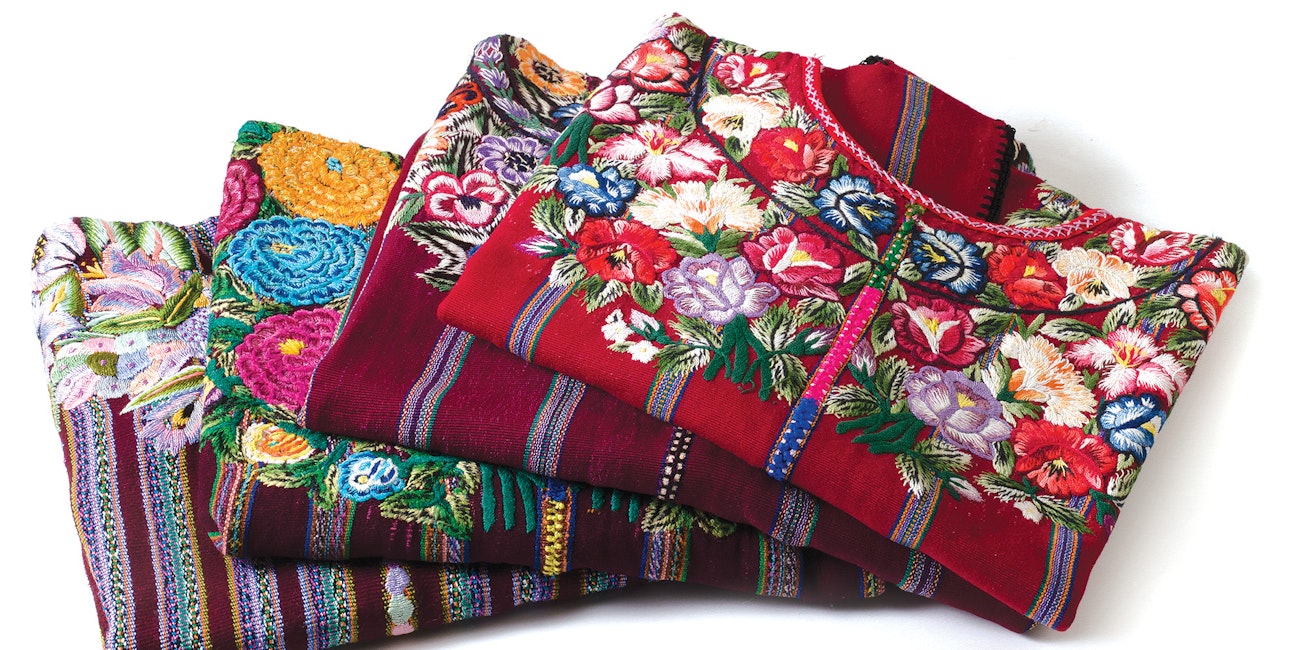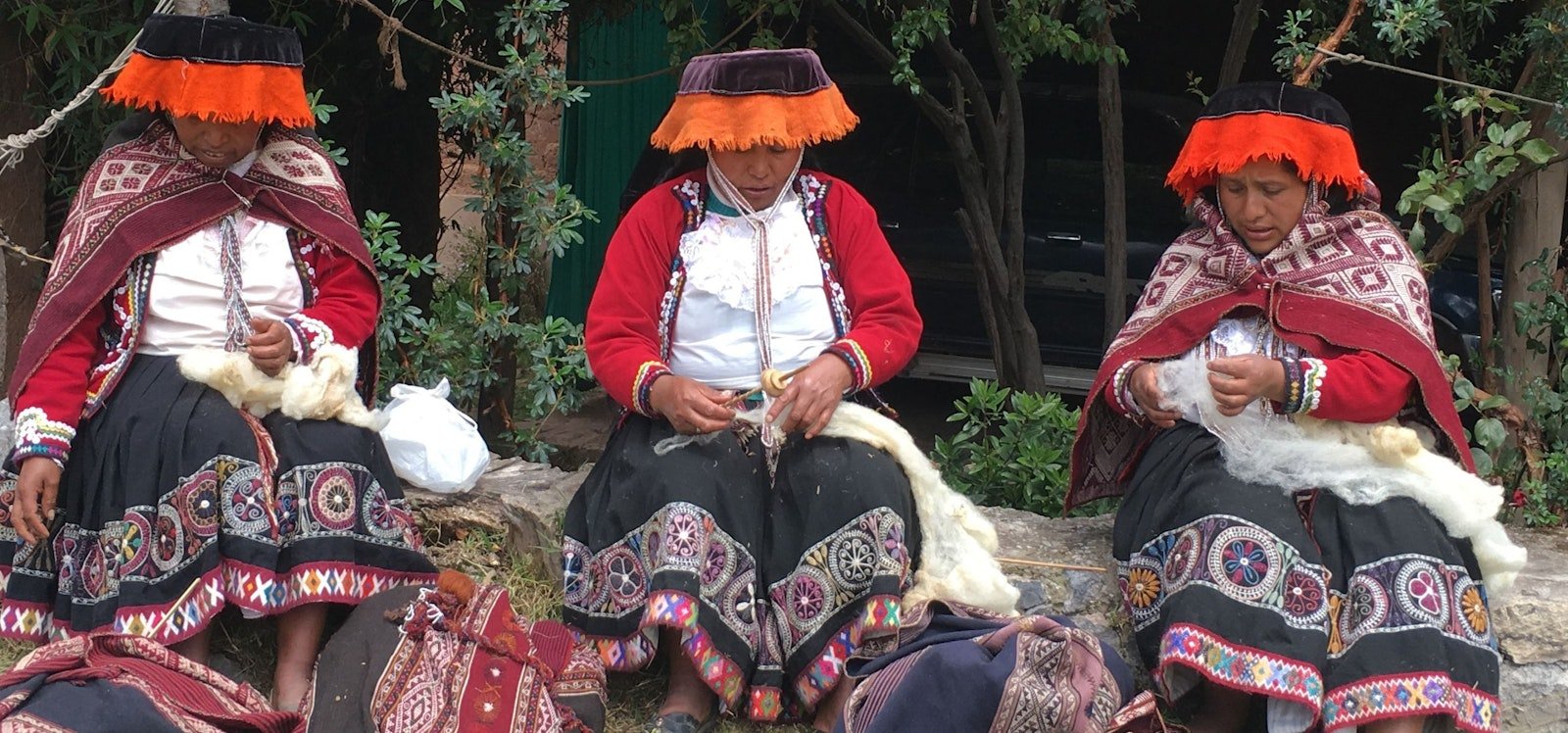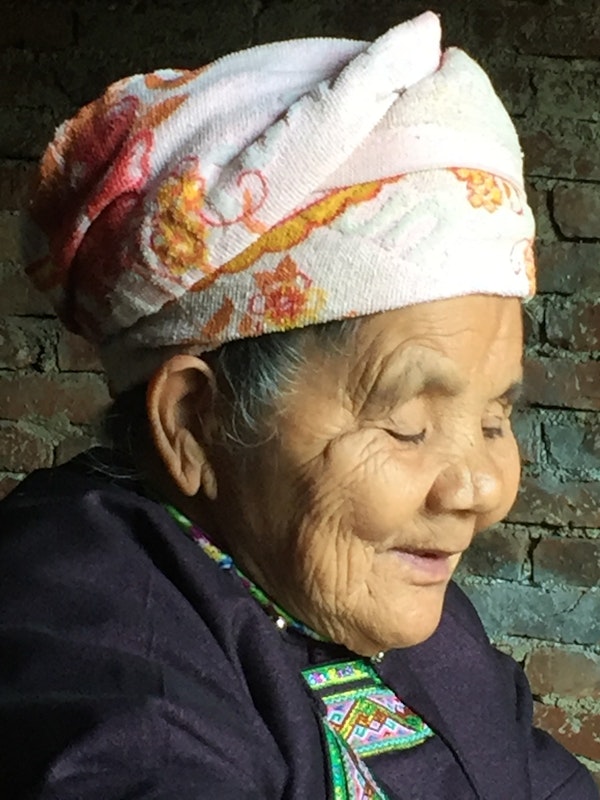The theme of our Winter 2025 issue is Folk Wear. Aside from intense discussions among the editors of whether it’s folk wear, or folkwear, or folk-wear, there was the question in my mind of just what that means. So of course I Googled it. The general consensus is that folk wear is the “clothing of an ethnic group, nation, or region, and expresses cultural, religious or national identity.” Makes sense.
Look in my closet: You’ll see eight pairs of black or blackish pants, six black or blackish skirts, two black dresses, eight black jackets or sweaters. Really. A few more items are scattered in there, but the overwhelming look is just black. And these are both everyday clothes and dress-up clothes. My own personal folk wear. And it’s not just me. Think women of a certain age, any age really, in their black leggings. That’s what folk wear, at least around where I live.
I’ve traveled a lot in countries where the traje, that is, the folk wear, is not black, not monochromatic. (Well, except for Afghanistan, where all the burqas are by order of the Taliban dark or medium blue.) More often, the traditional clothes are carefully crafted, vividly colored and patterned, and thoughtfully or even extravagantly embellished. Even the garments for everyday wear, not just those for festivals and special holidays.
 Apron. Maker unknown. Sewn and machine-embroidered. Cotton. San Martín Sacatepéquez, Guatemala. Circa 1950. Apron in the collection of Deborah Dwyer.
Apron. Maker unknown. Sewn and machine-embroidered. Cotton. San Martín Sacatepéquez, Guatemala. Circa 1950. Apron in the collection of Deborah Dwyer.
Case in point: The aprons of Guatemala, the ones you see on every Maya woman on practically every street and in every market stall in Guatemala City. Base fabric of handwoven, hand-dyed ikat, dressed up with ruffles, embroidery, lace, fancy braids, rickrack, and little secret pockets to hold change and whatnot. Everyday folk wear.
 Guatemalan huipils (square-cut women’s blouses) from Patzún, purchased in Oaxaca, Mexico. 2013. Handwoven and hand-embroidered. Collection of Cynthia LeCount Samaké. Photo by Joe Coca
Guatemalan huipils (square-cut women’s blouses) from Patzún, purchased in Oaxaca, Mexico. 2013. Handwoven and hand-embroidered. Collection of Cynthia LeCount Samaké. Photo by Joe Coca
In the villages, the Maya women wear huipils handwoven on backstrap looms with patterns picked up in riots of color; wide sashes (fajas) with their own motifs and color palette woven on special looms; skirts (cortes) of intricately tied and dyed fabric with elaborately embroidered seams. Their showy wardrobe isn’t worn to attract attention. More likely it’s meant to blend in with the comadres from their villages. It’s a statement of cultural pride and shared history. You can quickly spot a woman from Nebaj or Aguas Calientes. Meanwhile, their children might be heading off to school in their required uniforms: pleated skirts or neatly pressed trousers, button-up shirts, proper little neckties. The clothes are an identity statement; are they folk wear?
Should we get into hats? Red hats with a slogan, baseball caps worn backward, dainty white organza constructions on the tidy hair buns of Amish matrons. There’s a village high in the Bolivian altiplano where the older women wear felt hats fashioned after the helmets of Spanish conquistadores, not seen in these parts for a few hundred years. There’s a village in southwest China where the women put folded pink and yellow chenille towels from the local market on their heads. If it’s what the folk wear, is it folk wear?
Check out the Winter 2025 issue and the many wonders available in the full PieceWork library.



